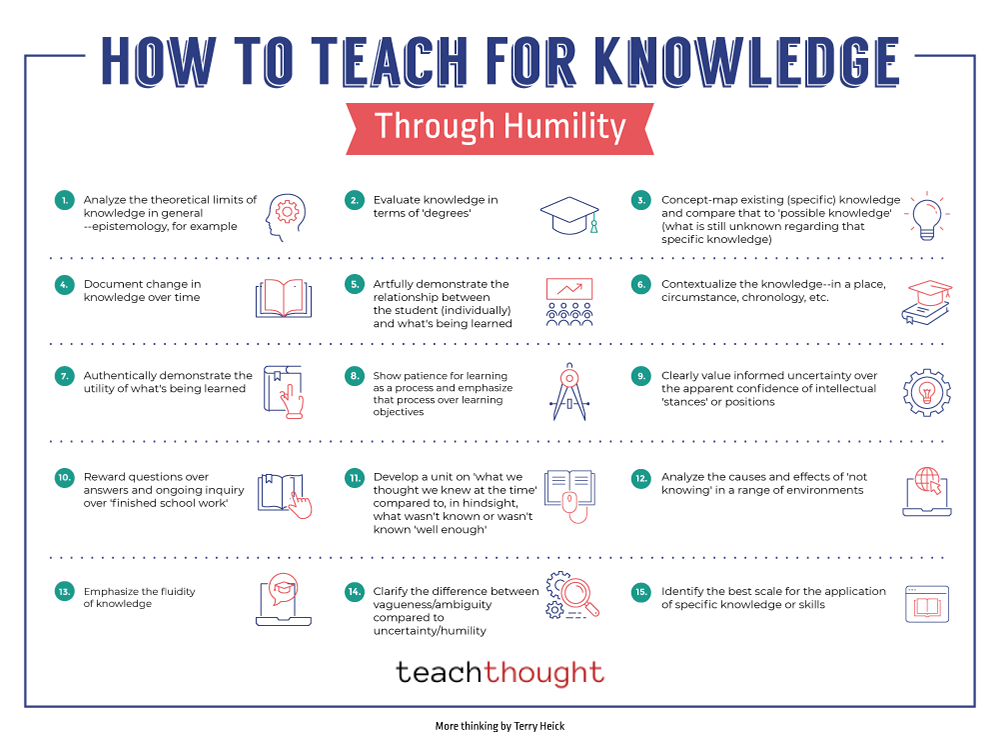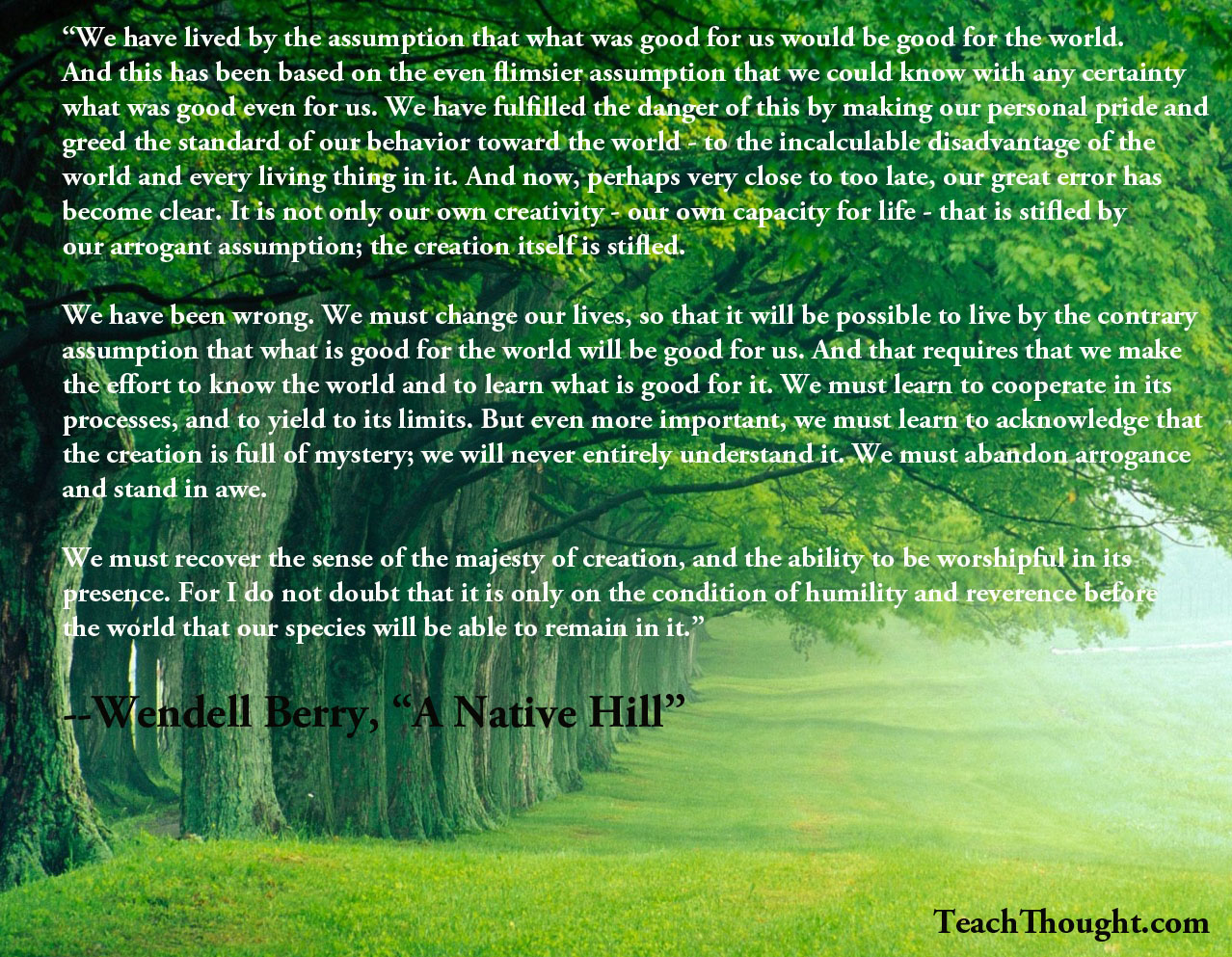

by Terry Heick
Humility is an interesting starting point for knowing.
In an era of media that is digital, social, cut up, and endlessly recirculated, the obstacle is no longer gain access to however the quality of access– and the reflex to then judge uncertainty and “truth.”
Discernment.
On ‘Understanding’
There is an appealing and distorted sense of “understanding” that can lead to a loss of reverence and also entitlement to “understand things.” If nothing else, modern technology gain access to (in much of the world) has changed subtlety with phenomenon, and procedure with accessibility.
A mind that is correctly observant is also correctly modest. In A Native Hillside , Wendell Berry points to humility and limitations. Standing in the face of all that is unidentified can either be overwhelming– or illuminating. Just how would certainly it alter the understanding procedure to begin with a tone of humility?
Humbleness is the core of vital reasoning. It says, ‘I don’t understand enough to have an educated point of view’ or ‘Allow’s discover to decrease uncertainty.’
To be independent in your own understanding, and the restrictions of that knowledge? To clarify what can be known, and what can not? To be able to match your understanding with a genuine demand to recognize– job that normally strengthens critical thinking and sustained inquiry
What This Resembles In a Classroom
- Evaluate the limits of knowledge in ordinary terms (a basic intro to epistemology).
- Review expertise in levels (e.g., specific, possible, possible, unlikely).
- Concept-map what is presently comprehended concerning a details subject and contrast it to unanswered questions.
- Paper exactly how understanding modifications with time (individual discovering logs and historic pictures).
- Show how each student’s point of view shapes their partnership to what’s being found out.
- Contextualize understanding– location, condition, chronology, stakeholders.
- Demonstrate authentic energy: where and exactly how this expertise is utilized outdoors institution.
- Show patience for discovering as a procedure and emphasize that process together with purposes.
- Plainly worth enlightened unpredictability over the confidence of fast conclusions.
- Compensate continuous questions and follow-up investigations more than “completed” responses.
- Produce a device on “what we thought we knew after that” versus what hindsight shows we missed out on.
- Assess causes and effects of “not understanding” in science, background, civic life, or everyday choices.
- Highlight the fluid, evolving nature of knowledge.
- Distinguish vagueness/ambiguity (lack of quality) from uncertainty/humility (understanding of limits).
- Determine the best scale for using particular knowledge or skills (individual, local, systemic).
Research Note
Research reveals that individuals that exercise intellectual humility– wanting to admit what they do not understand– are more available to finding out and much less most likely to hold on to incorrect certainty.
Resource: Leary, M. R., Diebels, K. J., Davisson, E. K., et al. (2017 Cognitive and social features of intellectual humbleness Individuality and Social Psychology Bulletin, 43 (6, 793– 813
Literary Touchstone
Berry, W. (1969 “An Indigenous Hillside,” in The Long-Legged Residence New York City: Harcourt.
This idea may appear abstract and even out of area in significantly “research-based” and “data-driven” systems of learning. However that becomes part of its value: it assists pupils see expertise not as fixed, yet as a living procedure they can accompany care, proof, and humility.
Teaching For Understanding, Discovering With Humbleness

